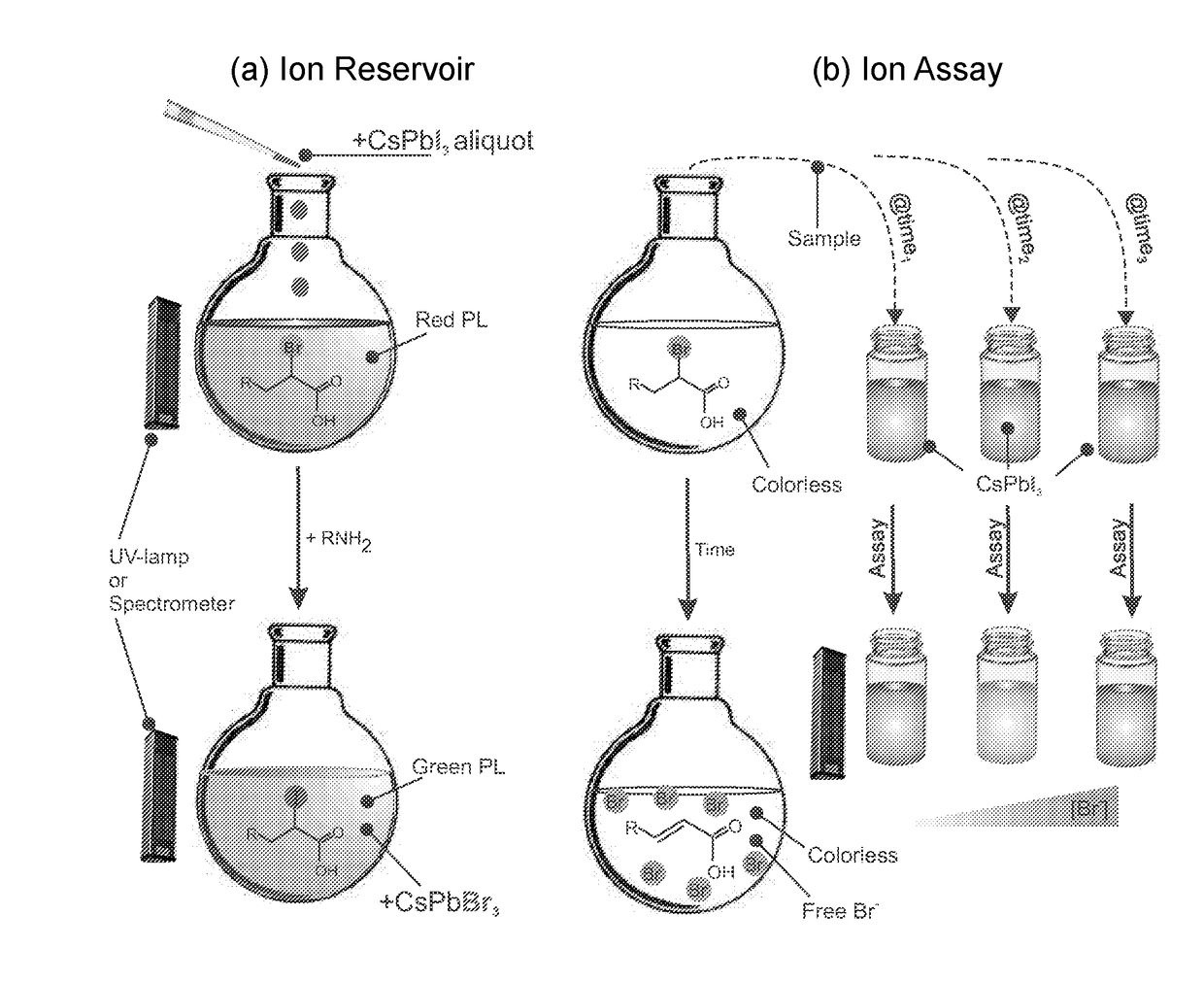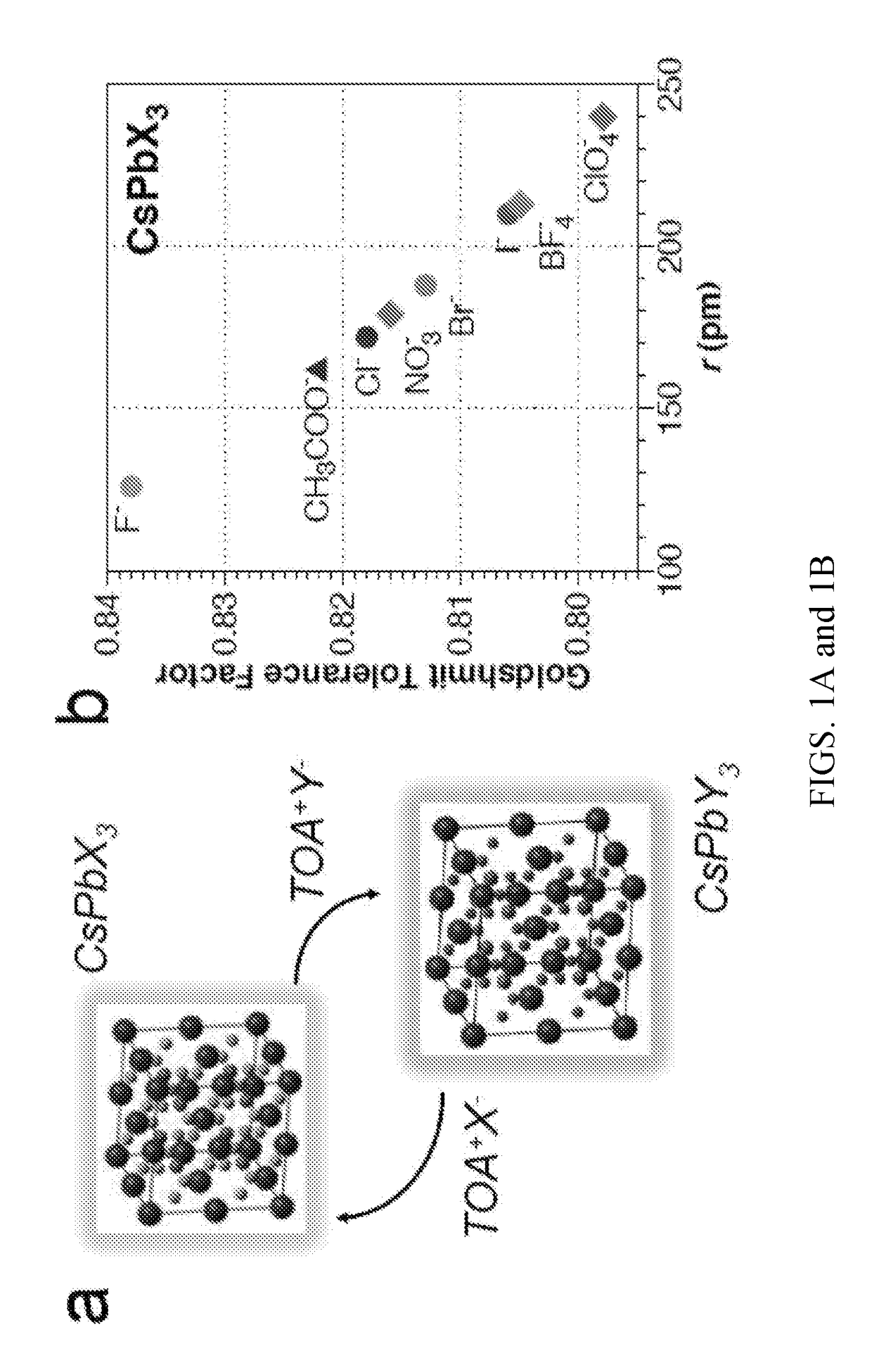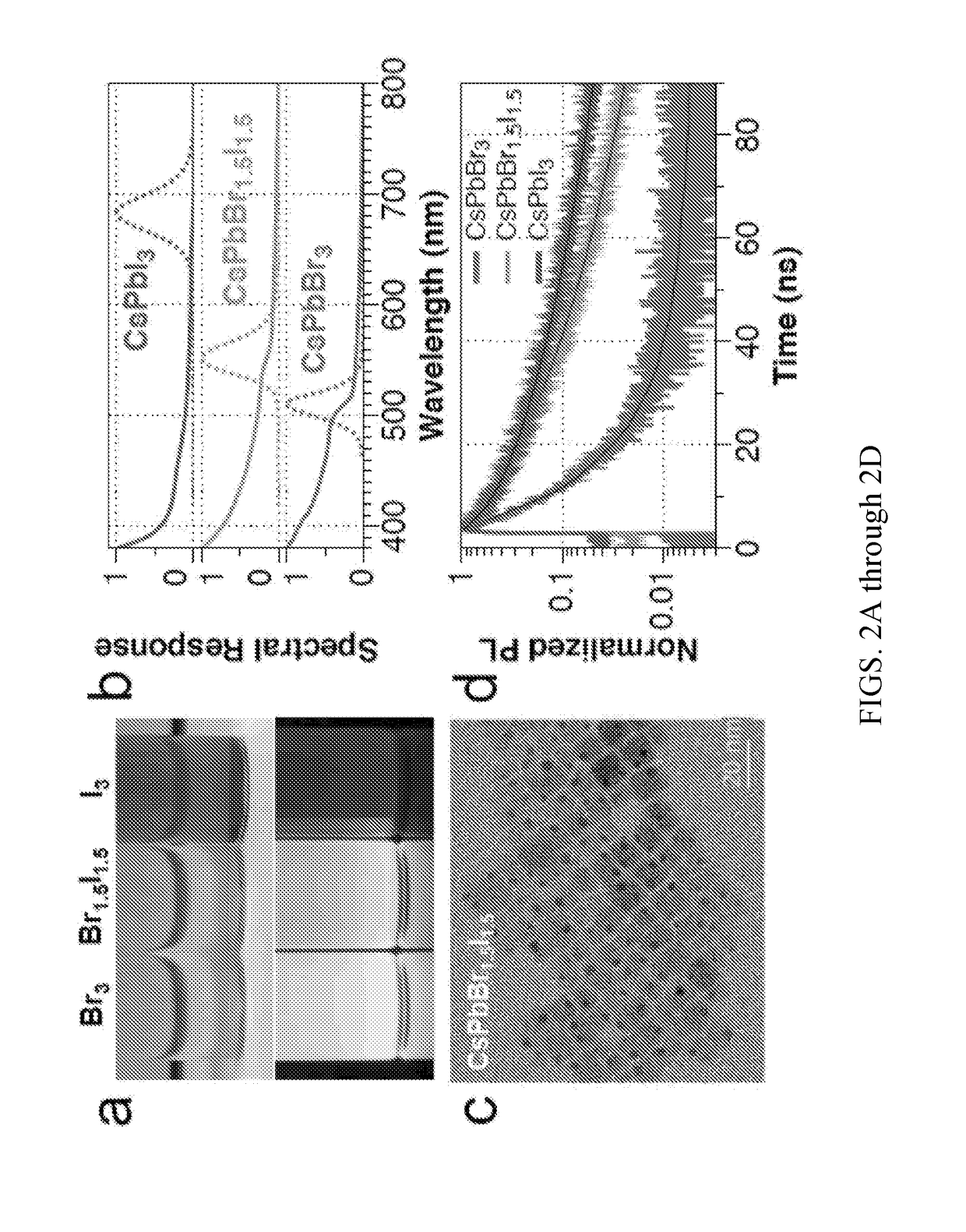System and method for visualizing chemical reactions in real time
- Summary
- Abstract
- Description
- Claims
- Application Information
AI Technical Summary
Benefits of technology
Problems solved by technology
Method used
Image
Examples
example 2
f NPs as Halide Reservoirs in Chemical Reactions
[0046]The P-NPs were used as catalysts for the transformation of organohalides in a Finkelstein halide-exchange reactions, as shown in FIGS. 8-10. Stock solutions of 13 mM 2-bromododecanoic acid [2-Br] and octylamine (OA) in hexane were prepared. In a typical reaction, a solution of CsPbX3 NPs (˜15μg / mL) in hexane was prepared to which the desired amount of amine was added first, followed by the desired amount of 2-Br. The reaction was either carried out in a sealed round bottom flask or sealed cuvette under N2 gas, or in a open glass 96-well plate. Extent of reaction was monitored with a fluorimeter to provide real time kinetics including reaction completion. It is envisioned that XYZ3 NPs of varying composition can be used to provide additional ion reservoirs for specific reactions.
example 3
of Organohalides
[0047]Chemical detection using XYZ3 P-NPs was studied for the assessment of organohalides in an unknown sample. In this invention, NPs with the composition CsPbI3 and CsPbCl3 were both found to be suitable for the detection of 2-bromododecanoic acid. In a typical reaction, a suitable amount of NP (32-108 μg / mL) was added to dry hexane (total volume of 0.5-1 mL) in the presence of a given concentration of 2-bromododecanoic acid, and the resulting change in photoluminescence emission wavelength was recorded over time on a fluorimeter. Gradual PL emission change is observed as anion replacement occurs between the NP and the alkylhalide according to a Finklestein reaction, allowing for quantification of the total amount of alkylhalide based on the final free anion equilibrium. Alternatively, mixing the two reactants into a small vial and emersion in a temperature bath (˜50° C.) speeds up the reaction, allowing for a rapid qualitative assessment of organohalide type and c...
example 4
tion of Organic Reaction Rates
[0048]The XYZ3 NPs were used to probe the reaction rate and yield of an organic reaction in real time. The rate of an organic substitution reaction was determined using the XYZ3 NP based assay, as shown in FIG. 13. Briefly, a solution of 4 mM 2-bromododecanoic acid was prepared in 10 mL of toluene and a varying amount of amine was added to achieve a desired concentration (4-32 mM). The solution was then heated to a reflux temperature (˜110° C.) to speed up the reaction. During this time, vials with 500 μL of 64 μg / mL CsPbI3 were prepared separately from the reaction mixture. Some of the vials were used to prepare a ion concentration calibration curve through additions of 10 μL of varying concentrations of tetraoctylammonium bromide in 1-butanol (1-10 mM), allowing the solutions to reach equilibrium, and then measuring both the UV-Vis absorbance and photoluminescence change. The reaction rate was determined by removing a 15 μL aliquot of the reaction mix...
PUM
 Login to View More
Login to View More Abstract
Description
Claims
Application Information
 Login to View More
Login to View More - R&D Engineer
- R&D Manager
- IP Professional
- Industry Leading Data Capabilities
- Powerful AI technology
- Patent DNA Extraction
Browse by: Latest US Patents, China's latest patents, Technical Efficacy Thesaurus, Application Domain, Technology Topic, Popular Technical Reports.
© 2024 PatSnap. All rights reserved.Legal|Privacy policy|Modern Slavery Act Transparency Statement|Sitemap|About US| Contact US: help@patsnap.com










